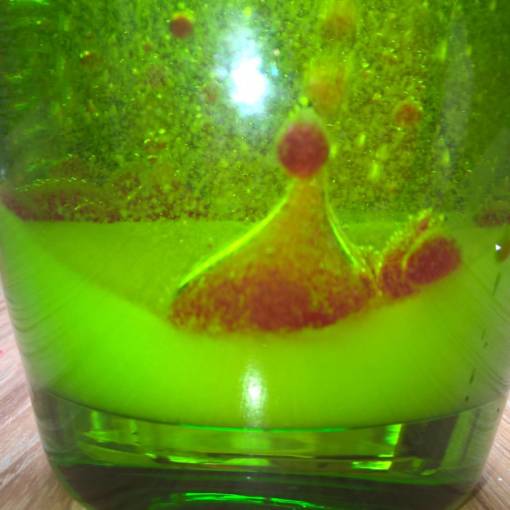Introduction
The human nose is the most protruding part of the face but it’s still one powerful protrusion. Whether it’s a big honker or a little button, if it is working correctly you can sense a wide variety of smells. Such nosiness is important for the survival of almost all creatures: to find food, avoid being eaten, and pick proper mates. For example, it warns us about rotten milk, a burning house, or even an unhappy skunk. In fact, it is believed that smell is the oldest of all of the senses, and it is also the sense that is most associated with memory. The nose is also the channel for quiet breathing. We will discuss about all the characteristics and all the things that make our nose so much more interesting that you were thinking about.
1 – How we smell ?
We could firstly wonder which mechanisms are involved when we smell things. What is the science behind smelling ?The human olfactory organ, the olfactory mucosa, is a sheet of cells 200μm thick, situated high in the back of the nose cavity. The olfactory system responds to volatile molecules that gain access to the mucosa with the in-and-out airflow as we breath. The molecules diffuse through the surface layer of mucus and stimulate the olfactory receptors. The mucus layer moves across the surface at 10 to 60 mm per minute toward the nasopharynx. This flow of mucus (which is increased and becomes more watery in such conditions as infection), assists in the removal of odours after they have been sensed. All this great system permit us to smell more than 1000 of billions of different smells.
But have you ever asked yourself, why you have 2 nostrils ? For sight and hearing, unity is strength: two eyes allow you to perceive the depth of a landscape, two ears permit us to locate the source of a noise. We could deduce that it is the same for smelling. And it’s true, the two nostrils are not sensitive to the same odors. Scientists prove that the right nostril sends its olfactory information to the right hemisphere and vice-versa. However, the right hemisphere is the “specialist” of spatial attention and emotions. It will treat the emotional aspect of odors. While the left is a language specialist, and it will try to identify odors. And did you know that every hour, we change of dominant nostril. When the left nostril is “open”, the left hemisphere is better oxygenated than the right. And vice versa. We can therefore imagine that by closing the right nostril, we facilitate our speech skills and that by obstructing the left, we refine our visual and spatial attention. It sounds weird, no ? Of course, it’s a light effect, but this is still real.
What about tasting food ? You could say me, tasting is different of smelling, you guy, are making an off topic… But this is not totally true. You have to know that 80% of the taste come from the smell of eaten food. Without our nose it would be terribly difficult for us to distinguish all the food we are eating. You probably wouldn’t differentiate Roquefort pasta with carbonara pasta, for example. Imagine how terrible the world could be ! As food is not just sweet, salty, bitter, sour or even umami, we need our nose to completely taste foodstuff. I think everyone can remember during our childhood, we were holding our nose closed while eating in an effort to chew and swallow a taste we did not like. The child find this method of ingesting undesirable food because taste and smell work together. And if a child is saying it, it’s true. Well, when a human chews their food, they actually push air through the nasal passages without realizing it. The result is smelling the food alongside tasting it, and lead to what we call flavor. I don’t know if you remember, but one day a scientist went at school to present its books and to do interactive experiences about “chemistry & cook”, his name is Hervé This. I read one of his books, called “Casseroles et éprouvettes”. It’s very interesting and he is delivering tips & tricks in cooking, like how to do the best soufflé.
In one chapter, it explains the importance of mastication and what it does about tasting food. He demonstrated that chewing the food, breathing and salivation modify the release of aromas. After human experiments, he concluded that the slower chewers better sense the aromas of food, probably because they divide more the food. Furthermore, it could explain why a same food is felt differently by multiple people. So now, next time you discover a new dish with friends, try to chew the same way to reduce the variables of the experiment !
2 – Olfactory memory
Olfactory memory refers to the recollection of odors. The sense of smell is closely linked with memory, probably more so than any of our other senses. A study has shown that people recall 35% of what they smell, compared to only 5% of what they see, 2% of what they hear and 1% of what they touch. We can remember smells for one year with a precision of 65%and retain their memories over time.
In animals, memory for environmental odors plays a vital role because it regulates many behaviors that are crucial for their survival. Thus, olfaction memory permits them to recognize other animals but also to feed.
To find out how odors affect memory formation, the researchers triggered an artificial perception of an odor in the brains of rats. To do this, they stimulated the piriform cortex with electrical impulses and they observed that the hippocampus directly responds to stimulation of the piriform cortex. You may wonder what role hippocampus plays? The hippocampus uses sensory information to create complex memories. It is involved in long-term olfactory memory.
Thanks to our long-term memory, we can recognize many smells. For example, if we pass by a bakery without seeing it, we will be able to say: hum it smell warm bread, is there a bakery ?
But not all smell is stored in long-term memory. Some smells are only retained in memory for short periods. For example, imagine you’re shopping for a new perfume. You wouldn’t smell two products at the same time as it would be difficult to distinguish between the two. To decide which one you prefer, you need to smell them one after the other. This means you have to temporarily store the smell and then recall it to make a comparison. The duration of short-term memory is believed to be in the order of seconds.
The olfactory function is very complex. In addition to memorization, it may be able to think of smells that evoke particular memories. This happen spontaneously, with a smell acting as a trigger in recalling a long-forgotten event or experience. Olfactotherapy is a psycho-energetic method that uses the odors of Essential oils to help to free themselves from blockages linked to the past. It uses smells and vibrations of essential oils to elicit conscious and unconscious memories, to find root of suffering and to reveal old traumas.
If to breath and smell is something that we do unconsciously. Why certain person suffers from olfactory disturb? This can happen because of viruses, bacteria or toxins because they have direct access to the brain via the olfactory pathway. In fact, the brain and the outside are only separated by a thin layer of mucus which is vulnerable to any external agent. This is often temporary and the person recover his olfaction function after the infection. Olfactory disturb can also happen because of some pathologies like Alzheimer or Parkinson. For each pathology, a complex mechanism is linked to this olfaction disturb. In the case of Alzheimer, a protein called tau protein is deposited in the olfactory bulb. This alter the olfactory function.
3 – All about sensibility
Les nez
Discover a profession that is the job of perfumer. A perfumer also called a “nose” is an expert on creating perfume compositions. He has a fine sense of smell and skill in producing olfactory compositions.
A perfumer must have a keen knowledge of a large variety of fragrance ingredients and their smells, and be able to distinguish each of the fragrance ingredients whether alone or in combination with other fragrances.
A nose can have 3,000 smells in memory. These are oils and chemicals, each with its own distinct scent. Of the 3,000, about 400 are natural substances extracted from things such as twigs, trees, flowers, herbs and grasses. The rest are synthetic, created in a laboratory by chemists.
A perfumer has to create a perfume for a client so some requirements have to be respected like the budget, the timeline or the consumer targeted. It can take several years and hundreds of ingredients before he come to the desired formula. Before composing, a nose must think and determine by his excellent memory what components he will use. In fact, some oils are very expensive so he can’t make thousands of tests. In order to compose his sample, the nose must choose ingredients that play a specific role. Ingredients can be gathered into 4 groups. The first one is primary scents. The nose chooses one or a few main ingredients for a certain concept. For example, the “roses”. Then, he needs ingredients from the second groups named modifiers. Modifiers alter the primary scent to give the perfume a certain character: for instance, fruit may be included in a floral primary to create a fruity floral. After, the nose selects ingredients from the blenders group to harmonize the mixture. Finally, the perfumer adds fixatives to support the primary scent.
When the nose has a global idea, he composes his sample thanks to his perfume organ and smells his formula on a piece of paper called paper blotter. The majority of perfumes are comprised of 10 to 20% perfume oils. Indeed, once the formula is accepted, the fragrance oil is dissolved in alcohol and water. At this step, the perfume can’t be commercialized. The mixture must be kept in tanks for several weeks to allow the perfume ingredients in the mixture to stabilize. A filtration is needed to remove any sediments and particles. Then, the solution can be filled into the perfume bottles and commercialized.
The perfume is stabilized but you may notice that sometimes it doesn’t smell the same when you applicate the perfume and 2 hours later. I will explain why. We can say that perfume has three sets of notes. There are the top notes, perceived immediately on application of a perfume. They evaporate quickly and form the initial impression. There are also the middle notes also called heart notes that emerges just prior to the dissipation of the top note. Finally, there are the base notes that appears close to the departure of the middle notes. The base and middle notes together are the main theme of a perfume. Base notes bring depth and solidity. Compounds of this class of scents are typically rich and are usually not perceived until 30 minutes after application.
The dogs
Everyone know how better are dogs at smelling than humans. The dog’s nose, is made up of several elements that allow it to perceive odors from 1,000 to 100,000 times better than humans. Indeed, the dog has nearly 220 million olfactory receptors, against only 5 million for humans. The predominance of its sense of smell classifies the dog among the macrosmatic species. Conversely, microsmatic species, which humans are part of, show a weak development of the brain part dedicated to smell. So, the dog can distinguish a very wide variety of odors, in very low concentrations. Here is what makes him a champion of smell: a differentiated circulation of air in his nasal cavity.
The flow directed towards the olfactory mucosa comes out very slowly from the area in dark blue compared to the expired air lungs in green-yellow. Its mobile nostrils fold when he sniffed, to send directly the air to the olfactory mucosa. This mechanism pipe almost all the air to dog’s mucosa while a human convey only 10%. Furthermore, 33% of his brain interprets odors, against only 5% for the human brain.
On top of that, the dog’s nose mucosa surface is equivalent to the size of its entire skin, while with us, it is equivalent to that of a ridiculous stamp. And a thing even more interesting about dog’s nose was revealed recently during a study. Scientists demonstrated that dogs can detect breast cancers ! In fact, the cancerous tumor produces volatile organic compounds, which are found in the sweat of affected individuals. But the concentration in the air of such compounds are only detectable by dog nose. This discovery is very surprising, but also, it could be very useful as the current tests are painful and expose to X-rays. I should remember too, the excellent work dogs are doing to detect drugs. They are fabulous good human companions.
Conclusion
To conclude, the olfaction permits us to recognize a wide variety of smells. It is a very complex mechanism that implies the memory but also the taste when we are eating. We can recognize smells because we have olfactory receptors. Dogs have more receptors than humans, that is why they can perceive odors at a lower concentration than us. Some people can practice their nose and recognize a lot of smells. This ability allows them to do a very complicated job that is perfumer. Finally, thanks to olfaction, we can cure some traumas but also detect pathologies. It’s a great discovery for medicine.
References
Casseroles et éprouvettes – ScholarVox Université. Retrieved May 3, 2020, from http://univ.scholarvox.com.passerelle.univ-rennes1.fr/reader/docid/41000128/page/80
Comment fonctionne l’odorat ? – Science & Vie. Retrieved May 3, 2020, from https://www.science-et-vie.com/cerveau-et-intelligence/comment-fonctionne-l-odorat-9542#:~:text=%20On,d’odeurs%20!
Dépistage du cancer du sein : le flair incroyable des chiens – Science & Vie. Retrieved May 3, 2020, from https://www.science-et-vie.com/corps-et-sante/depistage-du-cancer-du-sein-le-flair-incroyable-des-chiens-31742#:~:text=Apr%C3%A8s%20la,canc%C3%A9reuses%20!
Givaudan Ashford | Sense of smell – Sensory center. Retrieved May 3, 2020, from https://www.givaudan.com/fragrances/discover-science-behind-our-sense-smell
How We Smell Things: A Guide to the Human Nose | Live Science. Retrieved May 3, 2020, from https://www.livescience.com/10457-smell.html#:~:text=Such%20nosiness,potential%20dates.
Human nose explained. Retrieved May 3, 2020, from https://everything.explained.today/Human_nose/#:~:text=The%20human,the%20face.
Nose | Encyclopedia.com. Retrieved May 3, 2020, from https://www.encyclopedia.com/medicine/anatomy-and-physiology/anatomy-and-physiology/nose#:~:text=In%20functional,outside%20world.
A quoi nous sert-il d’avoir deux narines ? – Science & Vie. Retrieved May 3, 2020, from https://www.science-et-vie.com/cerveau-et-intelligence/a-quoi-nous-sert-il-d-avoir-deux-narines-9007#:~:text=On%20peut,bien%20r%C3%A9el.
science behind smell – Bing images. Retrieved May 3, 2020, from https://www.bing.com/images/search?view=detailV2&ccid=0mr9z7HN&id=19537A7AE6F98DAC4DC45295AE454F7A4FF00D47&thid=OIP.0mr9z7HNqeWTui1E4scpiwHaE8&mediaurl=https%3a%2f%2f3.bp.blogspot.com%2f-J7OBpyKpV1k%2fUjkuh3S12GI%2fAAAAAAAAADM%2fxwcRAbvz_p4%2fs1600%2fNose-structure.jpg&exph=500&expw=750&q=science+behind+smell&simid=608002605266174002&selectedIndex=7&ajaxhist=0
The Science of Mouth and Nose – How We Taste and Smell. Retrieved May 3, 2020, from https://www.dentalone-va.com/the-science-of-mouth-and-nose-how-we-taste-and-smell/#:~:text=%20It,with%20memory.
Taste And Smell | Encyclopedia.com. Retrieved May 3, 2020, from https://www.encyclopedia.com/medicine/anatomy-and-physiology/anatomy-and-physiology/taste-and-smell#:~:text=Older%20people,people.%20









